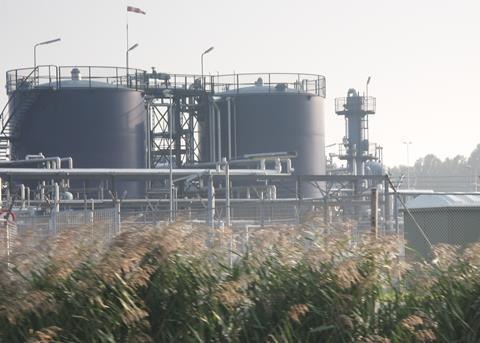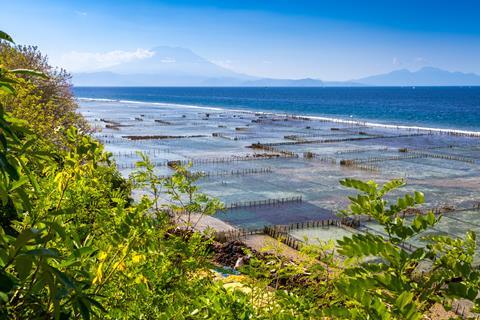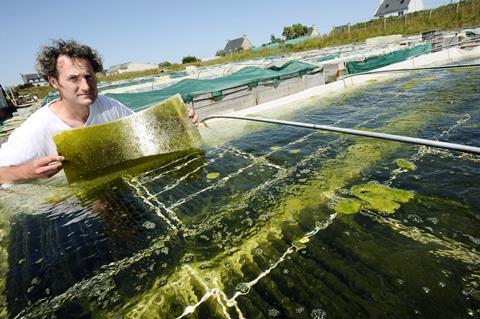From green LEGO bricks to compostable shoes, Fiona Case investigates how Lego and Reebok are making biomaterials mainstream
In the past, mankind used natural materials like wood, stone and plant-derived pigments, but over the last century the new materials and new products that have transformed our world have come from oil.
Chemists have become adept at transforming components of the complex mixture we call oil into polymers, medicines, dyes, food additives and many other materials. But consumer preferences for more sustainable products, along with concerns about increasing atmospheric CO2 levels, are pushing industry to reconsider bio-based materials. And researchers are discovering a wealth of new chemical structures that can be obtained directly from plant sources or created using new biotechnology techniques.
‘You can create better chemicals from plants than from oil,’ says Ian Archer from The Industrial Biotechnology Innovation Centre (IBioIC) in Glasgow. ‘Although oil is a finite resource there is still plenty in the ground, and as there is less enthusiasm for burning it as petrol for cars, more will be available for chemicals production. The move towards bio-based isn’t driven by a shortage of oil. It’s driven by a desire for sustainable materials and processes with minimal impact on climate change. But the real value is you can create materials that are functionally better.’
What’s brewing?

One approach is to take plant material – biomass – and use microorganisms to convert it into specific molecules. This is how brewing works: yeast converts the sugars naturally present in cereal grains into alcohol in beer. This same idea can be used to create molecules that are useful starting points for the production of plastics, drugs and dyes. Indeed ethanol from fermentation of sugar can be converted into ethylene, and then into bio-based poly(ethylene), the material used in Coca-Cola’s plant-based bottles.
Companies producing bio-based materials can use yeast, bacteria such as Escherichia coli, fungi, or even mammalian cells to carry out the chemical conversions from plant to products. For example, when fed with low-cost sugars, black mould provides high yields of citric acid, an important industrial chemical and a key ingredient in Diet Coke. The food additive monosodium glutamate (MSG) is made using bacteria. Drugs like penicillin and Taxol are made via yeast and bacterial fermentation, no synthetic route starting from fossil-oil is as efficient.
The chemicals company DuPont uses modified E. coli bacteria to turn corn sugar into 1,3-propanediol that is then used to make replacements for poly(ethylene terephthalate) (PET) and polyester for high-performance fibers in clothing or carpets. These products are commercial successes, but the processes are also an improvement for our planet.
In traditional synthetic methods, sequestered carbon is liberated from fossil-oil deposits, and the products inevitably add to atmospheric CO2 as they end up rotting in a landfill or burning in an incinerator. Bio-based materials, on the other hand, start as plants that take CO2 out of the atmosphere as they grow. At the end of their lives they are essentially ‘carbon neutral’. Bio-based syntheses also tend to require less energy, and produce less waste.
Karl Sanford from DuPont Industrial Biosciences in California described the potential for bio-based materials at the recent American Chemical Society national meeting: ‘Our bio-sourced Sorona polymer uses 30% less energy and releases 63% fewer greenhouse gas emissions compared to the production of Nylon 6’. They are also working on new plant-based packaging materials and on materials for sustainable sneakers with Reebok. These ‘Cotton + Corn’ sneakers are designed to be composted when they reach the end of their life, completing a cycle from soil to plant to sneaker to soil.
Karl reckons the best is yet to come: ‘Most current bio-based material production starts with sugars or starches,’ he says. ‘There is potential to use much more of the plant material – to use biomass that is currently burned or considered as a waste material – or to use plants that grow on land that is too dry, or too salty, for food production.’
Super slime
Another possible source for bio-based materials production is, well, slime. Algae are the most productive photosynthetic organisms on earth. Creating materials from vats of algae would require 10-fold less land area compared to land plants. And they happily grow in brackish water or in high salinity environments that are hostile to other plants.
Unlike other biotechnology approaches where the target molecule is created by a microorganism using biomass as food, in algae the organism itself is harvested. The membranes that give algae structure are rich in lipids – particularly if the algae is stressed and puts on fat (sound familiar?). The lipids are energy dense and can easily be converted into biodiesel for use in vehicles – in fact much of the fossil oil extracted from the earth began as algae in prehistoric times.
Algae oils can also be used for new bio-based materials. In 2015 BASF and Solazyme, Inc. launched the world’s first commercial microalgae-derived surfactant. Algae also accumulates carbohydrates and proteins in significant quantities that can serve as feedstocks for higher value products.
Green revolution
Researchers around the globe are searching for, or trying to create, microorganisms that will happily consume plant material and turn it into molecules that can be the feedstock for plastics and other materials. But Karl cautions that finding the right technology is not enough: there has to be a market for the product, at the right price, to make a bio-source material a success.
The effort to create a bio-based indigo dye provides a salutatory example. Indigo dye makes blue jeans blue, and since the late 19th century it has been synthesised using fossil-oil derived feedstocks that are toxic and carcinogenic. The high cost involved in treatment and disposal of the toxic byproducts provided an opportunity for the company Genecore. ‘Genecore had a good process using modified E. coli to convert the amino acid tryptophan to indigo,’ says Karl. ‘There were no toxic side-products, and their product was certainly viable in a market where indigo sold for $16 a kilo.’
However, globalisation pulled the rug from under them: production of indigo in countries without stringent environmental regulations brought costs down to $3 a kilo. The best green credentials were not enough for the blue dye, and Genecore’s process was shelved.

Another potential stumbling block for the green revolution is, even when the market is right, when it causes problems for other global challenges. Take the most familiar bio-based material today: bio-ethanol. More than 25 billion gallons were produced in 2015, mostly in the US and Brazil, for use as a fuel additive for petrol. The ethanol is produced by fermentation of corn and sugar that could, in principle, be used as food – and this has led to some pushback. Activists have argued that moving from fossil-oil to plants for all modern materials might help to solve the problem of climate change but it would be at the expense of a solution to world hunger.
A fix could be to use plant materials that are currently considered waste. Cellucomp in Scotland, for example, takes cellulose refined from root vegetable waste to create Curran (also gaelic for carrot). Curran is a microcrystalline nano-cellulose that is proving to be an excellent additive for improving paint toughness. ‘This is a much better use for food waste than anaerobic digestion to make methane,’ says Ian Archer from IBioIC. ‘You are maintaining and using the chemical complexity of the material rather than reducing it to the simplest organic material, and then burning it.’ Other major sources of under-used biomass include dead trees, corn stalks, straw and palm fronds. There is active research into ways to obtain bio-based materials from each of these.
Drop-in or break out?
When researchers first proposed bio-based replacements for materials that had traditionally come from fossil oil they were proposing ‘drop-in’ replacements: molecules that were identical and could be swapped into current manufacturing processes. Ian believes there is a market for this: ‘Lucite International want to replace their petrochemical route for making poly(methyl methacrylate) (PMMA, a transparent glass-like polymer),’ he says. ‘They already have customers asking for a more sustainable material. They are planning to use sugar from non-food grade sources as the starting point for methacrylate biosynthesis.’
The Lucite bio-based PMMA is a true drop-in replacement – exactly the same molecules, with the same specifications and same cost – but would consumers pay more for a sustainable material?

‘Is there a ‘green premium’?’ asks Ian. ‘In the past the answer was ‘no’. Consumers might be interested in products that were more sustainably produced, or from a plant source, but they were not prepared to pay more for it. This may be changing.’
But the bigger opportunity for bio-based material lies in breaking out of the current paradigm, and finding completely new materials and creating new products. ‘Biotechnology could provide a vast range of chemical structures. But producing any one in sufficient quantities to test for industrial-scale materials production takes significant time and resources,’ says Ian. ‘The challenge is to predict the properties from the chemical structure; to specify which molecules would be most useful to produce, and direct the biotechnology development towards these materials’.
The Lego group is spending over €100 million in a search for more sustainable materials for making and packaging their toys. A bio-based replacement for the fossil-oil based acrylonitrile butadiene styrene (ABS) currently used in Lego bricks will be challenging to find: the famous Lego-click, as the bricks attach, and their heirloom-like durability differentiate Lego from competitors. A bio-based replacement would need to show the same impact resistance and toughness as ABS, and have the same look and feel. But the company has committed to achieving this goal before 2030. More than 100 engineers will be employed at their new Sustainable Materials Center in Billund, Denmark, to meet the challenge
As chemists search for new bio-based materials Ian recommends they become more familiar with the metabolic pathways of microorganisms used for biotechnology development. ‘The lowest hanging fruit, the molecules that will be easiest to produce on an industrial scale, are those the organism already creates,’ he says.
Saraya Co., Ltd in Japan have developed a new type of glycolipid biosurfactant which exemplifies this approach. The sophorolipids they produce by fermentation of palm oil using yeast were already part of the yeast metabolism.
Naturally excellent
‘It has long been known that certain microbes naturally yield surface-active substances,’ says Yoshihiko Hirata from Saraya Co. ‘Since the 1970s researchers have sought to establish industrial applications of these materials as biosurfactants, but these early investigations did not lead to commercial-scale use due to low productivity and quality.’
These surfactants allow detergents to be marketed as sustainable materials, but the sophorolipids also provide better performance than traditional fossil-oil based materials. ‘Many surface-active substances form foam, which is particularly undesirable in home laundry machines and dishwashers,’ says Yoshihiko. ‘But the structural and formulation changes required for low-foaming with conventional fossil-oil based surfactants can lead to poor biodegradability.’
The natural sophorolipid surfactant is as good at cleaning as its traditional alternatives, but it has low-foaming properties and is biodegradable. It has an unusual structure for a surfactant. It has two polar heads and naturally exists in two forms: the lactone form and the acidic form.
The Scottish whisky industry … is at the forefront of sustainable manufacturing practices
‘In detergent formulation, the product that meets consumer requirements is achieved by mixing several kinds of surfactant. Sophorolipids are naturally a mixture of two types of surfactant (the lactonic and acidic form) . We called this property the ‘natural synergism’ of sophorolipid, and we have keenly investigated it,’ says Yoshihiko. ‘It seems as if the yeast has done the optimization of the biosurfactant in its evolutionary history through natural selection, by making the best of the synergy of the surfactants just like an ingenious detergent developer.’
This is the real promise of the push towards bio-based materials – new materials that likely would not have been identified using conventional product development.
Cheers to the future
The push towards bio-based materials, rooted in 1970s concerns about oil shortages, is becoming a reality because of climate change concerns. And it may result in new materials for consumers and opportunities for companies around the world.
Ian points to the Scottish whisky industry, which is at the forefront of sustainable manufacturing practices. ‘About 10% of the mass of the ingredients come out of the distillery as whisky,’ he says. ‘The remaining solids are currently used as animal feeds and liquids spread as fertiliser, but there may come a time when this biomass is used to make new materials and is more valuable than the whisky!’
I’ll drink to that.
Fiona Case is a science writer based in San Diego, California, US










No comments yet